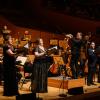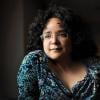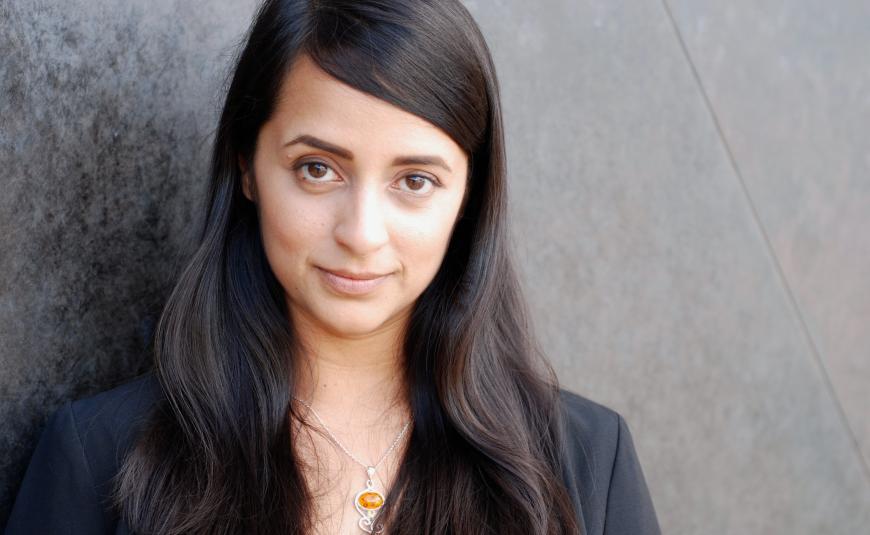
Composer Reena Esmail has received a Fulbright Fellowship, various young composer awards, and commissions from organizations including the Los Angeles Master Chorale, Kronos Quartet, the Baltimore Symphony, Seattle Symphony, Chicago Sinfonietta, San Francisco Girls Chorus, and the Yale Institute of Sacred Music.
In a field where white males are heavily represented, Esmail, an Indian American woman, is succeeding and working to bring others along with her. That’s why she encourages young women to compose as a mentor for Luna Composition Lab; started Shastra, an organization promoting musical connections between Indian and Western musical traditions; and worked with Los Angeles’s Street Symphony, which “utilizes music to create opportunities of human connection to homeless and incarcerated communities.”
Esmail grew up in Los Angeles, the only one in her household born in the United States. She holds degrees in composition from The Juilliard School and the Yale School of Music, and she says that with her work she wants to bring people together through creating “equitable musical spaces.”
Esmail, who will be at the San Francisco Symphony as part of the SoundBox series Dec. 9–10, talked with SF Classical Voice about those spaces and much more: working with musicians who improvise, wanting to honor influential women composers, and her journey from an outsider in music to a conduit.
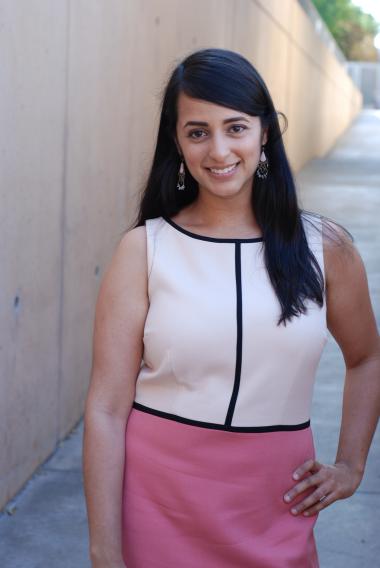
You say you want to create equitable musical spaces. What does that mean to you?
It’s changed so much over the years. In my mind there are different groups of people that make music in different ways. I’ve tried to find groups that wouldn’t necessarily ever be on a stage together and find ways to put them together, bring them into conversation with each other. Practically, a lot of the work I do is between Indian and Western classical musicians, who often don’t come from the same tradition, so there’s not a lot of room for them to be able to play together, and I work with that. But then I do a lot of other things, working with people between different kind of demographics and socioeconomic levels, working with people who are students and professionals, just anyone who wouldn’t typically come together on a piece of classical music.
Your dissertation was called Finding Common Ground: Uniting Practices in Hindustani and Western Art Musicians, and it was meant to “explore the methods and challenges of the collaborative process between Hindustani musicians and Western composers.” What are the challenges?
Basically, Indian classical musicians don’t read notated music — they improvise — and Western musicians, obviously, are reading off the score all the time, so there are a variety of different challenges that emerge from an improvised tradition versus a notated tradition. You want to create these devices that allow Western musicians to bring their best selves to something, so you want to have ways that they can play notated music, but then also have ways that Hindustani musicians who can’t necessarily follow a score would be able to jump in because you’re giving them the aural cues that they need to understand how the music is processed.
There are so many ways that I work with that in my music, and the dissertation is talking about how other composers have worked with that in their music. I think the best way I can characterize it is sometimes there are cognates that work between languages. And sometimes they’re even false cognates. But if you know what that collection of sounds means, in two different languages, you can actually figure out how to make that work in a larger system. That’s essentially musically what I do.
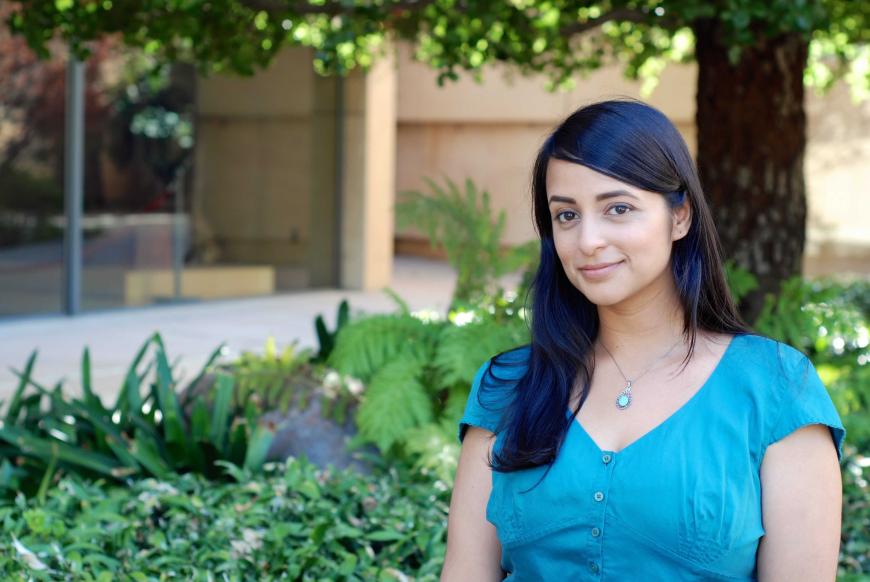
You had a Fulbright to study in India. Could you talk about why you went and what you did when you were there?
I went in 2011–2012. And it was right at the time when I was really trying to understand Hindustani classical music. I had maybe about a year of education in it, and I just knew that the way that I understood Western classical music, because I’ve been studying it since I was a child — I really wanted to have that immersive understanding of Indian classical music. It was amazing getting to study the music in its own culture. I was studying just a basic understanding of vocal music while I was there, but I was also traveling the country, going to music festivals. It was a unique experience because a lot of the artists that were really famous — the first time I ever heard of them was hearing them live. Imagine it’s like never hearing or knowing who Emanuel Ax was and then, all of a sudden, just going to a concert. That was my introduction to the culture of Indian classical music. On one hand, I was meeting major artists, and on the other hand, I met very local musicians who played folk instruments. That was really what that year was about — contextualizing Hindustani music in its own culture for myself. Now, when I come back, I feel like I’m bringing a piece of not just Indian classical music in the technical sense but [also] its embedded culture into the music I write.
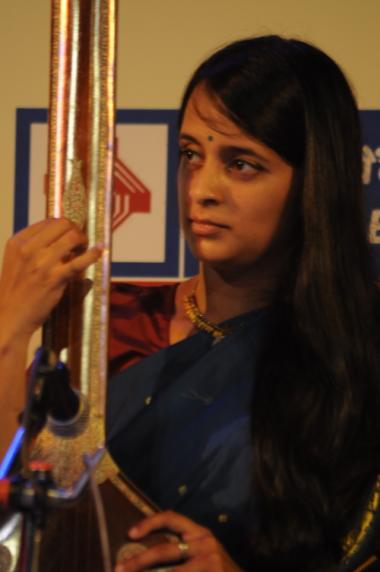
When you work with Western musicians and Hindustani musicians, what do you feel is most important for them to know about each other?
The first thing that comes to mind is [that] when you’re working within your own culture, there are certain values that are really important within a certain musical culture. But I think when we’re working across traditions, the most important thing is just being open to the idea that maybe the things that you value are not necessarily things other people value. So, you go in with this sense of openness and exploration to try to find what values are important to someone else and where that Venn diagram overlaps and where it doesn’t. That’s a very specific kind of player and a very different player necessarily than someone who is going to be able to succeed in the center of their own tradition.
You were the composer-in-residence for Street Symphony. What drew you to that?
This goes back to the creation of equitable musical spaces. I think, as a composer, you’re always looking for what the parameters are on anything you do. If you’re working with a professional orchestra, you’re thinking, “What can each of these players do?” What was the potential in having had a very elite training and being able to do pretty much anything with your instrument if you’re working with students that have really different parameters? And then, working in between those groups, there are again different kinds of cognates.
I was working with professional musicians and also community musicians: specifically, a wonderful choir that’s now actually getting a real national name for themselves, the Urban Voices Project. They were a group of people who were living on Skid Row, either recently or, at that time, currently homeless, and they came together to sing every week. My thought was, “How do I write a piece that allows professional musicians to show themselves to community musicians and community musicians to show themselves to professional musicians in a way that’s allowing them each to put their best foot forward and allowing [everyone] to really express themselves in a way that makes them feel comfortable?” I wrote a number of pieces for them, one of which is called “TaReKiTa,” a tiny little piece for choir, which sold tens of thousands of copies with Oxford University Press.
I wrote it really out of love for this group of people who were coming together to sing truly because they just loved it and wanted to sing — and also they were just really fascinated by Indian rhythms. I wanted to meet them in that point of fascination, and that was how the piece came about.
How do you think you got so interested in this? You studied Western classical music as a kid.
I think when I was a child growing up in a family that was an immigrant family, the five people that lived in my household — my paternal grandparents, my parents, and me — I was the only person in the household who was born in America. Everyone else was from India. So, I was aware that there were so many ways of being and there were so many different ways of perceiving the world because, of course, I was also growing up in Los Angeles — in that same part of Los Angeles where celebrities lived — and I was going to school with their kids and seeing these two realities coming together side by side. I was always aware that we all have so much to teach one another. Especially when you’re bilingual or, frankly, bilingual culturally, you’re aware that you might be able to be a connector between these different cultures.
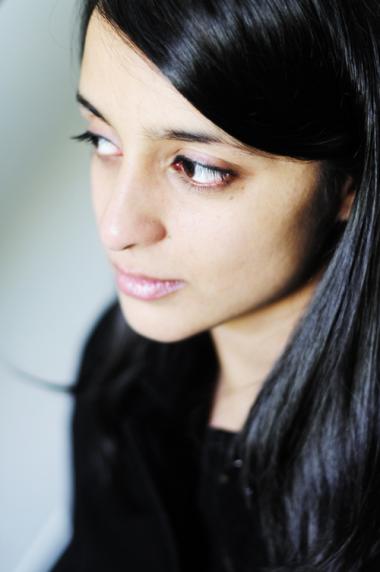
As I grew up, and as I went into Western classical music, which is a place where in my generation there are not many South Asians, my South Asian community was really kind of baffled by what I was doing. On the other hand, Western classical musicians were baffled as to why I was one of the lone South Asians there. I realize that the very thing that made me an outsider in both communities when I was young is the very thing that makes me a conduit now.
Would you just talk about Shastra and what you do with them?
I started this organization in 2013. It was after I came back from India, and I realized that if you’re a person who has a lot of friends in different places, and you just know that they would love to meet one another, and that they would have so much in common if they had the same language — I feel that is why I created Shastra. It was this way to bring Indian and Western classical musicians together in dialogue.
Over the years, the organization has had many iterations and different levels that we work at. We’ve had a festival, where professional musicians of both traditions will come together, and we’ve had all kinds of different educational initiatives that we’ve done. The thing I’m proudest of that, unfortunately, hasn’t happened since the pandemic but will happen next summer again is where we bring composers and Indian classical vocalists together, and we pair them, and we kind of have them teach each other one another’s traditions. I don’t want to call it the Socratic process, but it’s through this process of inquiry into each other’s traditions. In the way that learning a language, the best way to learn it is by going to a country where no one speaks your language and then having to figure out how to survive. That’s what we’re doing on both sides with Indian or Western classical music. We now have a whole body of repertoire that’s created by these composers for string quartet and an Indian classical singer, and we’re hoping to keep on expanding that dialogue in all its various forms.
What are you doing for SoundBox?
The focus of the SoundBox is actually a bit of a new focus for me, which is just this idea that we’re thinking about women composers and what their contribution is. There are a number of women who haven’t necessarily had their own biological children but have birthed generations of composers into the world. One of those people is Nadia Boulanger. So many different, incredible composers who are very famous studied with her. Then someone who is doing that right now is Gabriela Lena Frank. I have loved her work since I was a child, and she’s just been a real guidepost for me.
When I was thinking about what I could create and what I could put into the world, I wanted to show what the lineage was that both of these women were fitting into and the lineage that they are producing on the other side. There are these amazing groups of composers that are being produced by these figures who have dedicated their lives to creating amazing spaces where different composers can try things out, where they can really learn and grow, and they’re both kind of outside of the conservatory environment. It comes from who they are as people and what they wanted to put into the world. That was the thing specifically interesting to me about this program, and it ranges from very old to extremely new, and there’s a bit of my work on there.


